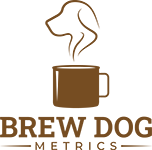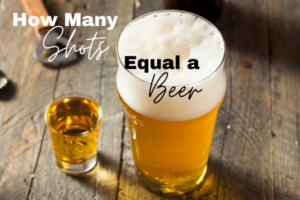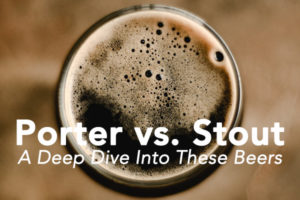There are few things more exciting for a beer enthusiast who is serious about their suds than getting into the hobby of brewing. When purchasing a beer brewing kit, one of the first questions that homebrewer wants to answer is “How Long Does It Take To Brew Beer?”
How long will it take to prepare and finally uncap a bottle of your first home-brewed beer?
The correct response is – it depends. There are many recipes, methods, and fermentation styles. In most cases, the amount of time required is also determined by the type of beer you brew. For example, those with a high percentage of alcohol need more time.
It’s difficult not to show excitement about opening the bottle of your own homemade beer. It isn’t quite as easy as that. While it is simple to make your own beer using the kits available at your local store, it does need some patience. You’ll have to buy some beer from your local liquor store before your homebrew is ready to drink.
But, as with anything truly great…
One of many things that are well worth the wait is your first batch of homemade beer.
I remember brewing my first few batches and being ecstatic when they finish. It isn’t quite as easy as that. To some extent, I still get the urge to open a bottle early. But patience is something that all homebrewers must have enough of.
In this article, I’ll try to clarify some misconceptions about how long it takes to make beer.
From Brewing To Drinking
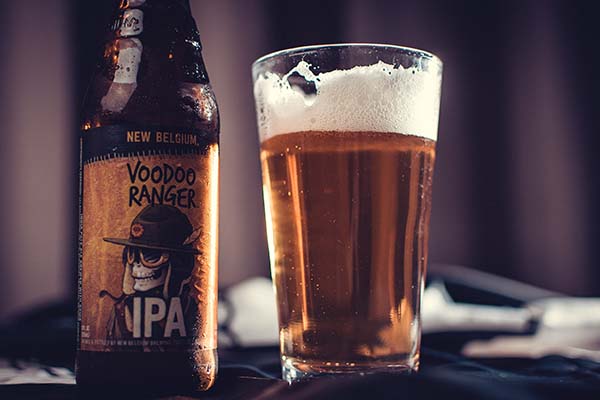
As a beer lover, you’ve started wondering about the brewing beer process and everything it entails at some point. There are differences and similarities between each type of brewing.
From microbrewing to craft breweries to commercial breweries.
You may have even wondered, “How long does it take to brew beer?”
Moreover…
Several factors influence the time it takes for your beer to go to ready-to-drink beer. In most cases, the procedure requires approximately four and eight weeks. Four weeks is about the shortest time you’ll have to wait.
The actual preparation of the additives takes a few minutes. Your beer must ferment in your home brewing setup for at least two weeks. It might take longer, depending on what type of beer you’re brewing. It comes with two weeks of bottle cooling after you bottle your homebrew.
Furthermore…
The quality of the yeast you use to make your homebrew will also affect how long it takes for your beer to ferment. Brewing is both an art and a science, so keep that in mind. When your beer is ready, it will be ready. Being such a beer connoisseur requires a lot of patience.
I know it’s easy to get carried away with the prospect of progressing from the brewing stage. Nobody wants to wait for an eternity, and the sense of anticipation to see what you’ve created is palpable. When you rush, you will almost always end up with a beer inferior to what you would have gotten if you had waited.
Additionally…
I work in a brewery, and the time from brewing to glass is essential. When we transition a beer through the system faster, we free up brewing equipment and save money. Never compromise on quality. It’s kept in the fermenter until you resolve the problems and meet the qualifications.
After you’ve bottled your first batch…
You can always start on the next one. Ensuring that you always have a supply of flavourful home-brewed beer on hand. This will make the wait for the next batch a tiny bit easier to bear.
Lastly…
Remember that yeast requires a while to convert all sugars into alcohol. Even after you complete the technical part of the job.
Brewing
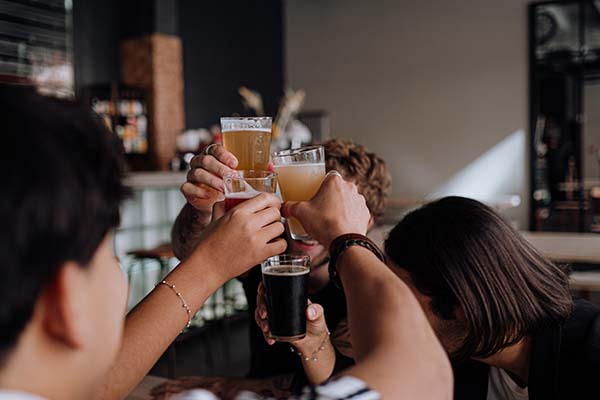
Brewing is making beer by steeping a starch source of water. And then fermenting the resulting sweet liquid with yeast. It’s done in a brewery or at home by a homebrewer. Beer’s primary ingredients are cold water and fermentable starch, such as malted barley. The majority of beers are hop-flavored and fermented with brewer’s yeast.
To clearly define…
“Brewing” is the process of controlling the interactions of water, yeast, starch, and hops to produce what is known as BEER. The actual brewing process is much more complicated. Prepare yourself for frightening words like lautering, wort, and isomerization.
The brewer’s task is to have as much influence over as many components as possible. Such that the final result is like what he imagined.
In some ways…
“Brewing” is all about performing as much as workable to influence the outcomes. We can brew beer because of yeast, which is a single-celled organism.
When we make beer…
To produce those sugars, we’re preparing a specific amount and variety of grain. Then add the yeast so that they can feast and produce alcohol. You can understand the concept of brewing if you can wrap your head around that.
We’re not finished yet…
Homebrewing can be as complex or as simple as you want it to be. A brewing pail, a homemade bong, and a siphon hose are all you need. The beer must ferment for at least a week. Put your non-fermented beer in the priming bucket to do this. The bubbler is then inserted into the small hole on top. Allows for the escape of gas without tainting the beer. Then let it sit for a while. Open the spigot and enjoy a glass when you’re ready to drink.
However…
Unless you want to bottle more beer, a basic home-brewing kit is a good investment.
Fermentation
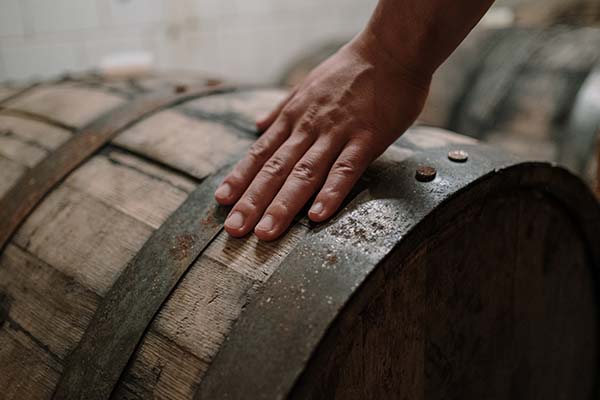
After preparing your brewing ingredients, put them in your fermentation vessel. This is where it will be active for the next few days. It is then followed by a ten-day or so period of slower fermentation. Fermentation is the critical stage in beer production. This determines the quality of your product. You should adhere to the recipe’s instructions.
Consequently…
Primary fermentation is the most crucial step in the home brewing process. Fermentation is all about providing the best conditions for the yeast. This will convert the sugars in the wort into alcohol, CO2, and desirable flavors and aromas. The fermentation process takes about two weeks. As a result, you can consider this into your waiting period.
After your beer has finished its first fermentation…
Prepare priming sugar before bottling it. So, if you want to save some time and effort, use carbonation tablets. After capping, keep them somewhere dark and at room temperature for at least two weeks. Bottle conditioning could take up to a month.
During this period…
The rest yeast in your brew transforms the sugars from your cueing sugar into carbon dioxide. This will result in a small part of secondary fermentation. If you don’t wait long enough throughout this step, your beer may end up flat.
Moreover…
At this point, you can only use a hydrometer or refractometer to check the brew gravity daily. The fermentation is complete when you get the same measurement results two days in a row. On the tenth day, begin inspecting the hydrometer’s gravity reading. This will ensure that you did everything right.
Check it daily until there is no change in activity on your hydrometer. A consistent reading over days indicates that fermentation is complete. The beer is ready for your bottles.
Furthermore…
Fermentation occurs in stages after adding the yeast to the wort. The length of each step will differ depending on the yeast you’re using. Whether or you made a yeast starter, as well as the temperature at which fermentation happens.
- Lag Phase
After adding yeast, the first fermentation phase lasts 3 to 15 hours. Yeast grows and multiplies as wort absorbs oxygen. Lag Phase is the time between adding pitch yeast to the wort (pitching) and the start of fermentation.
Following its entry in the wort…
It takes some time for the yeast to adjust to its new surroundings. It requires time to transition from dormancy to metabolic activity or active fermentation.
During the lag period…
The yeast activates pathways to import sugar and other materials required for fermentation. The lag phase can last anywhere between 3 and 15 hours. This determines factors such as wort type and gravity. Most brewers tend to favor higher wort temperature during this stage.
In addition, even during the lag phase…
Yeast cells take up available oxygen quickly. Yeast requires oxygen to produce essential compounds, most notably sterols. Unsaturated steroid alcohols play an important role in yeast membrane permeability.
Even though…
Warmer temperatures lead to a quicker lag phase. Brewers normally keep the lag phase temp underneath where the yeast will ferment.
And finally…
It is also critical that the lag phase does not last too long. It’s because well-aerated wort provides an ideal environment for bacteria and wild yeast. Thus, fermentation must begin before other organisms can establish a foothold.
Although most worts will continue to stay stable for at least 24 hours…
It’s best to err on the side of cautiousness and strive for active fermentation within 15 hours.
Although most worts will be stable for at least 24 hours…
It’s best to be cautious and aim for active fermentation within 15 hours.
- Exponential Growth
At the lag phase’s end, yeast gobbles up sugars and generates alcohol and CO2. Simple sugars like glucose and fructose break down for the next one to four days. Complex sugars, such as maltotriose, decompose last.
Moreover…
It is the time when noticeable fermentation indications occur. This includes bubbles on the fermenter top and plumes in the airlock. During this stage, you’ll also observe a strong scent of beer. This will start spreading throughout the room.
Furthermore…
When the yeast exits the lag phase, it consumes the sugars in solution. The production of CO2 begins to disperse through the airlock and forms a layer of foam on the beer’s surface. The exponential (or logarithmic) stage of yeast growth has begun.
During this period…
The number of cells increases, and alcohol and flavor compounds generate. During this period, airlocks bubble like crazy. Most neutral ale yeast has an olive aroma that escapes from the airlock. Because yeast consumes priming sugar rapidly, the exponential phase occurs. Yeast consumes wort sugar in a specific pattern. First, use glucose, followed by fructose and sucrose.
These are simple sugars that the body can absorb. The glucose content of wort is approximately 14 percent of the wort sugars. Maltose is the malt’s centerpiece sugar and a key flavor component. It accounts for 59% of wort sugars.
Yeast uses it to create the distinct flavors found in beer. One to five genes in yeast DNA “turn on” in response to maltose, allowing brewer’s yeast to ferment. Glucose can then proceed through the normal metabolic cycle.
Consequently…
Maltotriose is the last fermented sugar. Maltotriose is a difficult sugar for the yeast to break down. Some yeast ferments it better than others. Some brewer’s yeast strains don’t ferment maltotriose at all. The less maltotriose a yeast strain ferments, the more fluffy it is. Each strain’s capacity to ferment maltotriose determines its attenuation range.
The beer is said to be at “high kraeusen” when the head of foam turns yellow to brown. Solubilized malt and hop components are primarily responsible for the colors. Brown spots form as a result of oxidized hop resins.
- Yeast Growth
At this point, yeast growth slows. Yeast enters a static phase of growth. The majority of flavor and aroma, such as alcohols, esters, and sulfur, is created in this phase. This calls by some green because it lacks an acceptable flavor balance.
Besides that…
Beer matures during the stationary stage of growth, the conditioning phase. During fermentation, yeast reabsorbs diacetyl. And hydrogen sulfide escapes as a gas from the fermenter’s top. The kraeusen falls, and yeast begins to settle out or flocculate.
Also, at this point…
It is critical to check the attenuation to ensure that the yeast finishes fermenting. Some yeast strains begin to flocculate before reaching terminal gravity. Hence, it must be “roused” back into a solution.
Some breweries cool the contents of the fermenter to 35 to 40 degrees Fahrenheit. This causes the majority of the yeast to flocculate. Because most homebrewers lack the equipment, they must wait for the fermenter to “clear.”
Keep in mind:
If you bottle your homebrew, the flocculation process completes in the bottles.
Ales Vs. Lagers
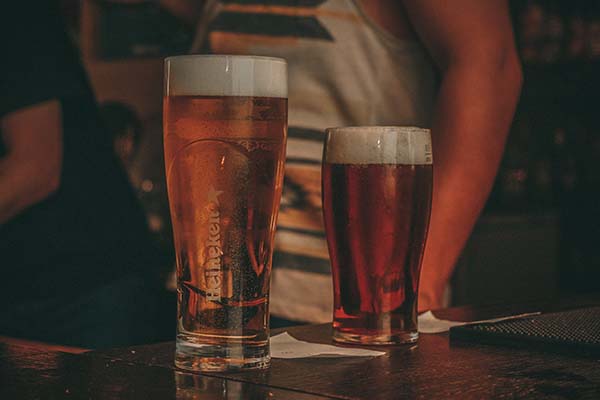
Different styles of beer may ferment for longer or shorter periods. Some perform better with longer or shorter time frames of bottle conditioning. When we inquire, “How long does it take to make a beer?” We can’t ignore the distinction between ales and lagers.
When it comes to fermentation, ale, and lager are two distinct types of beer. After four to six weeks, you can open your first bottle of light ale. Lager requires up to two months to mature because it ferments lower temperatures.
Generally speaking…
Ales are ready to drink before lagers. It’s not uncommon to consume the beer after 4-6 weeks of fermentation and conditioning.
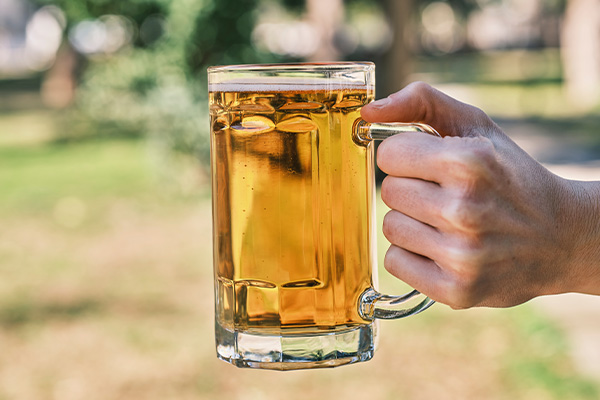
- Light Ale
A light ale is the quickest beer to make. Fermentation takes only two to three weeks. The maximum time for bottle conditioning is four weeks. It is defined as a light-colored beer with low alcohol content.
- Dark Ale
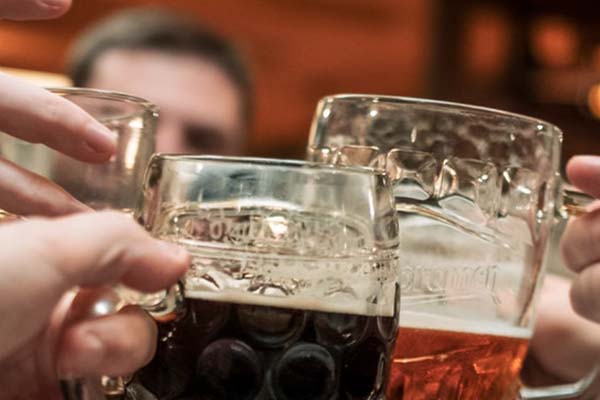
The primary reason for fermenting dark ale for four to six weeks is to achieve the desired beer color. If you prefer, you can extend the bottling time to eight weeks. Dark Ale is a simple descriptor rather than a style designation for a specific type of beer. One of the most well-known types of German-style beers is dark beer.
It gets its dark color from roasted grains, which give it a richer, deeper flavor. It does not necessarily have higher alcohol content. Darker beers are distinguished by coffee, chocolate, and other strong beer flavors.
Moreover…
It is a beer as a “dark ale” when the beer at hand is dark in color. Thus different from most beers available at the time.
- Amber Lager
This is not a craft beer to be rushed. It ferments for about six months, with another three to four months for bottling. As a result, you must wait nearly a year before attempting it. Amber lagers are like those craft beer styles that are frequently dismissed as bland. They lack the seductive qualities of intense IPAs and mind-blowing sours. However, when viewed through the lens of modern craft, amber lagers can be exquisite;
…blazing with flavor and depth, yet as simple to drink as any other.
Furthermore…
A popular craft beer style that emphasizes both malt and hops. Amber lagers have a medium body and a warm or caramel-like malt flavor. Hop bitterness can range from very mild to moderately strong. Brewers can achieve advanced flavors by mashing process and dry-hopping.
- Dark Lager
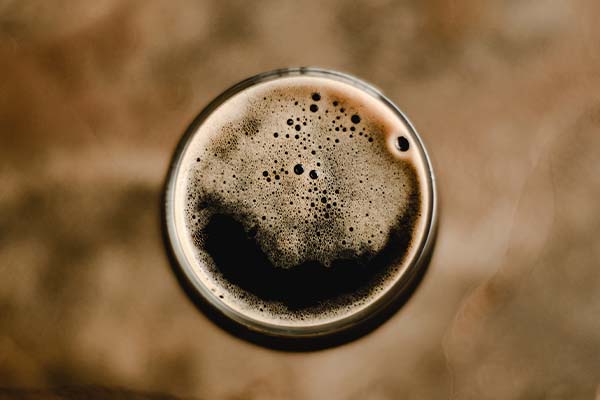
A dark lager is the undisputed champion of slow fermentation. Although the bottling time is the same as for light lager, the fermentation process takes at least ten months and often spreads out over a year. Dark lagers come in a wide range of flavors. Don’t let your preconceptions get the best of you.
Get your taste buds ready!
Start brewing, and…
Begin by dispelling those assumptions. Dark lagers will surprise you if you let them.
Conclusion: How Long Does It Take To Brew Beer?
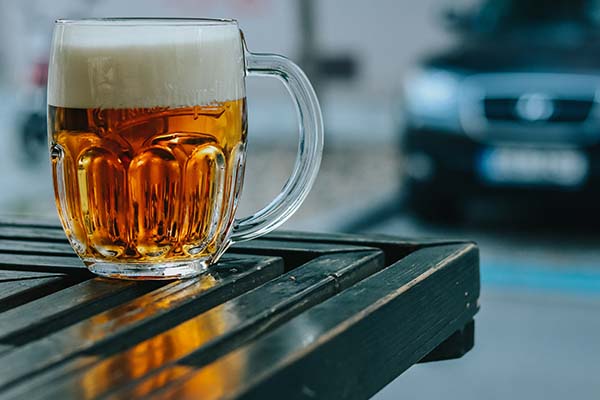
A good beer takes time to make. Depending on the recipe and equipment, the brewing process can take several hours. Fermentation will cause you to wait anywhere from a few weeks to more than a year for your beer.
So, how long does it take to brew your beer at home?
Though the entire process can take as little as a month from start to finish…
You’ll spend most of that brewing time allowing the beer to ferment and condition. In general, plan on 6-10 hours of hands-on time per brew day and 2-4 months between brewing day and drinking.
Having said that…
You’ll have your reward for sure for being patient…
…and for allowing your homebrew to develop the best flavor.
Have Confidence In It And Give It Time!
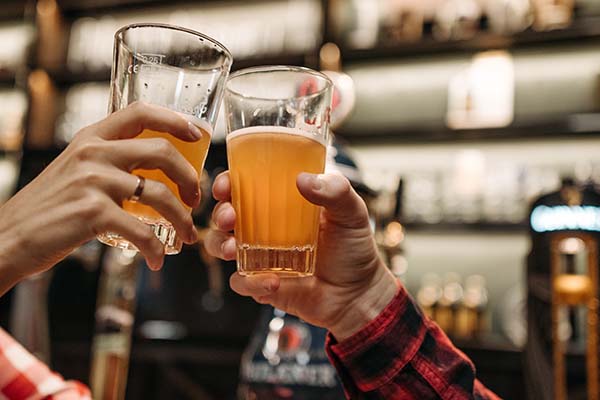
The truth about brewing your own beer is that it takes a lot of patience to develop flavor and condition. One thing you’ll notice is that they start to peak after you’ve consumed some of the batches.
It’s tempting to skip some of these steps to get to the fun part of drinking the beer sooner. And, yes, you can make a fizzy, boozy drink in much less time…
— but it doesn’t taste as good.
A “young” craft beer has harsh, unbalanced flavors and lacks the intensity of a finished beer. Also, if your brew pot before the yeast has eaten all the sugars, you run the risk of some bottles bursting.
But, as they say, you know what they mean…
The longer you wait, the more you value.
